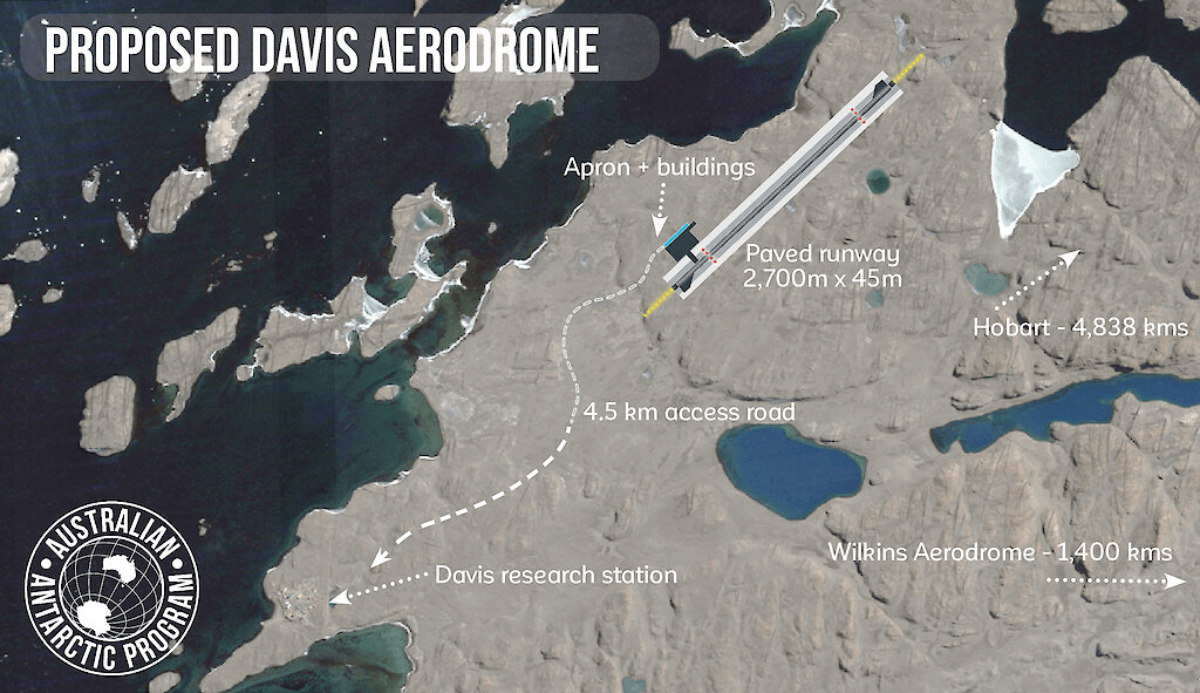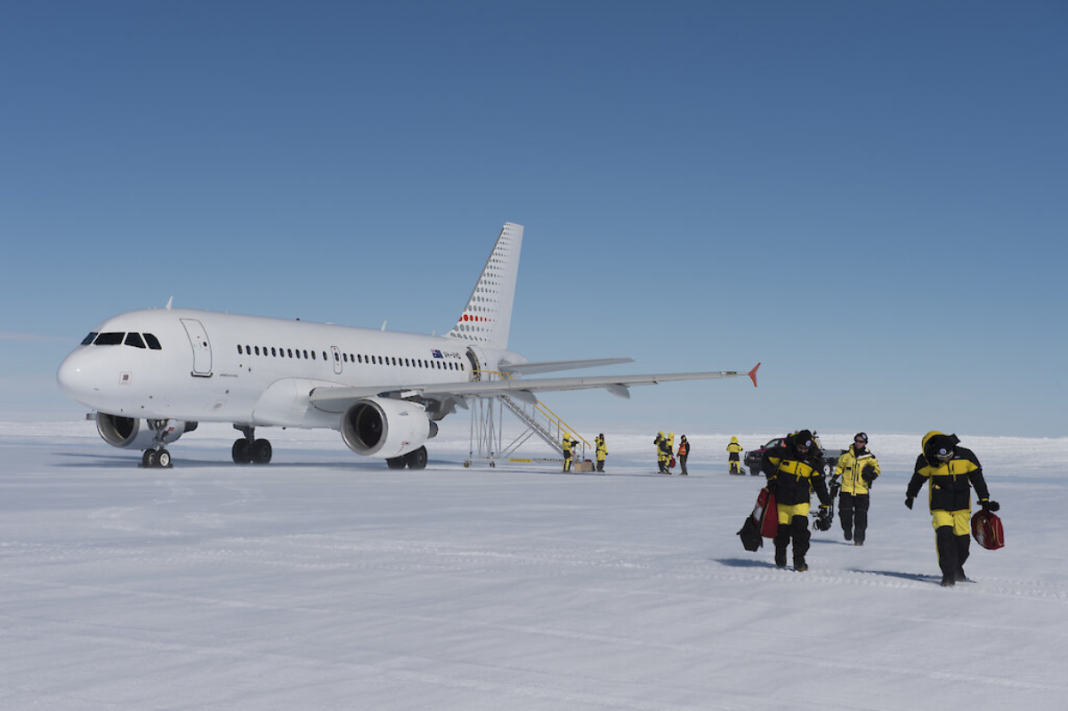Antarctica’s first paved runway has moved a step closer to reality. Australia is moving forward with plans to build a 2,700-meter paved runway near its Davis research station in the Vestfold Hills. The Australian Government has now put the multi-million dollar project out for competitive tender.

It will be a tricky construction job. In addition to building the runway and terminal facilities, there remain the logistical issues of transporting equipment, materials, and crew to the chilly rump of the earth for the build.
“If it goes ahead, this will be the most significant infrastructure project in Antarctica to date, and it is unprecedented in scale and complexity,” said Kim Ellis, Australian Antarctic Division’s Director, and Project Proponent in a statement.
A remote paved runway among ice, rocks, and penguins
The Vestfold Hills site was based on criteria of construction feasibility, environmental considerations, and proximity to critical areas of scientific interest.
Up the 100 people live and work in the immediate area of the proposed paved runway. The nearby Davis research station is situated at 68° 34′ 36″ S, 77° 58′ 03″ E.
The Australian Antarctic Division describes the site as predominantly ice-free and covering an area of approximately 410 square kilometers between rocky hills. The paved runway and terminal facilities would take up around two square kilometers.

Australia has extensive interests in Antarctica and is one of seven nations with territorial claims there. Australia’s territorial stake comprises 42.4% of Antarctica’s land-mass. But Australia has never had a year-round runway on the frozen continent.
An alternative to a blue ice runway 1,400 kilometers away
About 13 years ago, a blue ice runway opened at Wilkins Aerodrome near the Casey research station. That operates between October and March each year and caters for Airbus supply flights from Hobart, Australia’s go-to airport for Antarctic flights.
A specially modified A319 operates these flights. Carrying just 38 passengers, the plane can get down to Antarctica and back without refueling. Wilkins also plays host to some military aircraft capable of handling the conditions.
But ice runways have limitations. The new paved runway near Davis will provide more reliable access to Antarctica throughout the year. Further, while Wilkins Aerodrome is a relatively handy 70 kilometers from Australia’s Casey research station, it is 1,400 kilometers away from Davis and even further from the Mawson research station.

In addition to providing handy access in emergencies, Mr Ellis said in his statement;
“The proposed aerodrome will deliver a significant capability boost to the Australian Antarctic Program and revolutionize scientific research on the continent.
“An aviation capability that regularly and efficiently delivers scientists and instruments to Antarctica would offer unprecedented opportunities.”

The new runway will reduce isolation
The flights between Hobart and the new runway would take about six hours to cover the 4,838-kilometer distance. That’s a significant improvement on the current twice-yearly resupply visits by an icebreaker (subject to sea ice conditions). Ski-equipped fixed-wing planes also fly in from nearby Antarctic stations and currently help link Davis to the outside world.

Reportedly, much of the new runway will be prefabricated in Australia and shipped to the site by ship. This includes 11,500 cement elements weighing 10 tonnes each. That’s before other infrastructure such as terminals, lighting, and all the other gear than makes an aerodrome function gets brought in. It’s going to be a big job.
As other countries increasingly show interest in the region, Australia is keen to reinforce its claims in Antarctica. The Australian Government says the new paved runway would enhance Australia’s leadership, long-term interests, and scientific activities in the region.
[ad_2]
Source link


